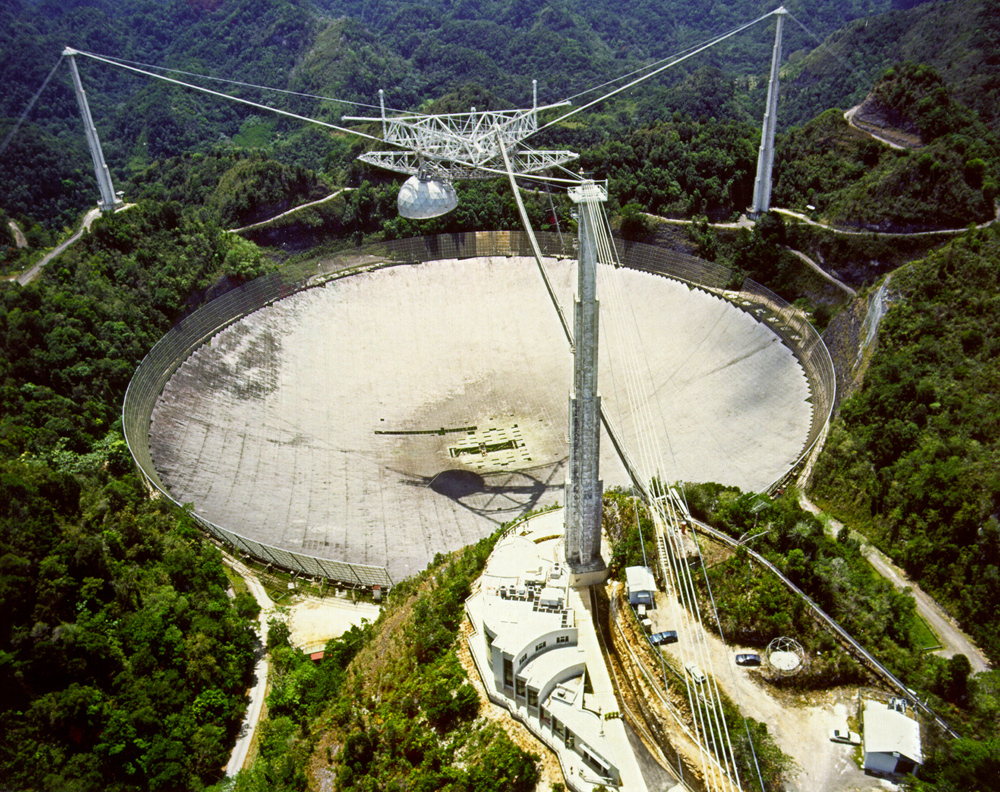
Strange radio signals have been spotted coming from the vicinity of a nearby star — but don't get your hopes up that aliens are responsible.
On May 12, the 1,000-foot-wide (305 meters) Arecibo radio telescope in Puerto Rico detected "some very peculiar signals" apparently emanating from Ross 128, a red dwarf star that lies just 11 light-years from Earth.
"The signals consisted of broadband quasi-periodic nonpolarized pulses with very strong dispersion-like features," Abel Mendez, director of the Planetary Habitability Laboratory at the University of Puerto Rico, wrote in a statement late last week. [13 Ways to Hunt Intelligent Aliens]
"We believe that the signals are not local radio frequency interferences (RFI) since they are unique to Ross 128, and observations of other stars immediately before and after did not show anything similar," he added.
The three leading explanations for the signals, Mendez wrote, are solar flare-like emissions from Ross 128, emissions from some other object in the same field of view and a burst of some sort from a satellite orbiting high above Earth.
Each of these hypotheses has its issues, he said. For example, solar flares of the type that could be responsible generally occur at lower frequencies. In addition, Mendez wrote, there aren't a lot of other objects in the Ross 128 field of view, "and we have never seen satellites emit bursts like that."
But if you're getting the urge to invoke E.T., temper it: "In case you are wondering, the recurrent aliens hypothesis is at the bottom of many other better explanations," Mendez wrote.
Sign up for the Live Science daily newsletter now
Get the world’s most fascinating discoveries delivered straight to your inbox.
Figuring out the signal's source will require more data, and Mendez and his team already have some in hand. The researchers carried out a successful observation of Ross 128 — as well as of Barnard's Star, a red dwarf located just 6 light-years from Earth — using the Arecibo dish yesterday (July 16), Mendez announced on Twitter yesterday. (These Arecibo observations are all part of a campaign to better understand the radiation and magnetic environments of red dwarfs, and to look for signs of undiscovered planets orbiting them, Mendez explained in his statement about the Ross 128 signals.)
Other research teams are following up as well. For example, scientists with the SETI (Search for Extraterrestrial Intelligence) Institute have already begun observing Ross 128 with the Allen Telescope Array, a network of 42 radio dishes in northern California, said Seth Shostak, a senior astronomer at the SETI Institute.
Like Mendez, Shostak said that aliens are unlikely to be the cause of the Ross 128 signal.
"It does look like the kind of broadband interference that you get in SETI experiments," Shostak told Space.com.
But that doesn't mean the ET hypothesis should be dismissed, he stressed.
"The historic lesson is clear — these things pop up, and you have to follow them up, because you never know what's going to be the real one, or even if there will ever be a real one," Shostak told Space.com. "Following up is mandatory."
Follow Mike Wall on Twitter @michaeldwall and Google+. Follow us @Spacedotcom, Facebook or Google+. Originally published on Space.com.











